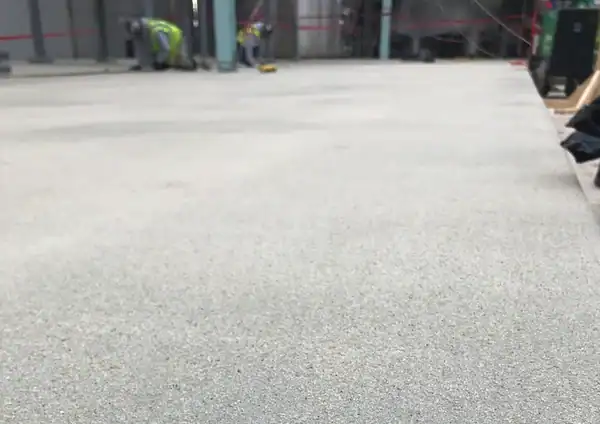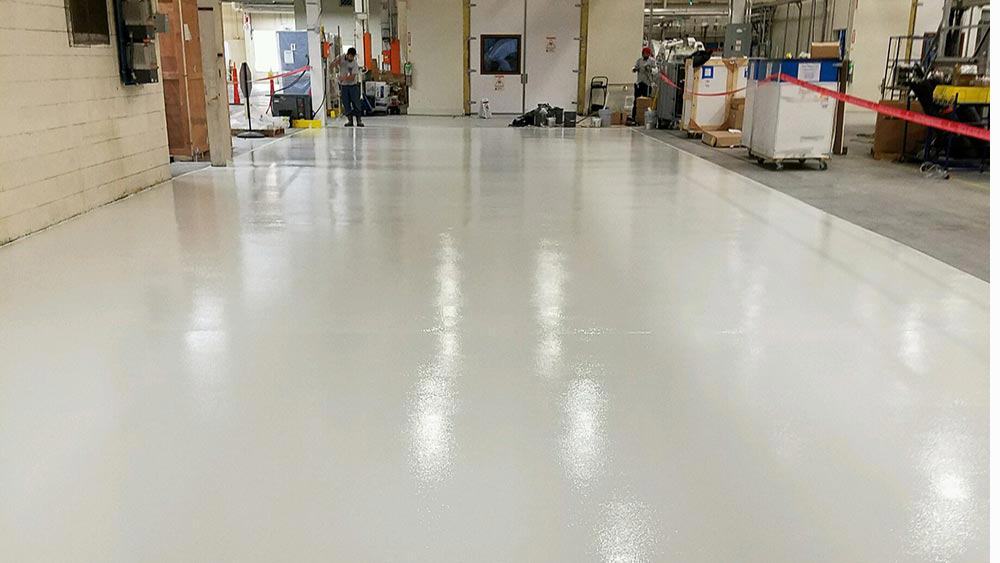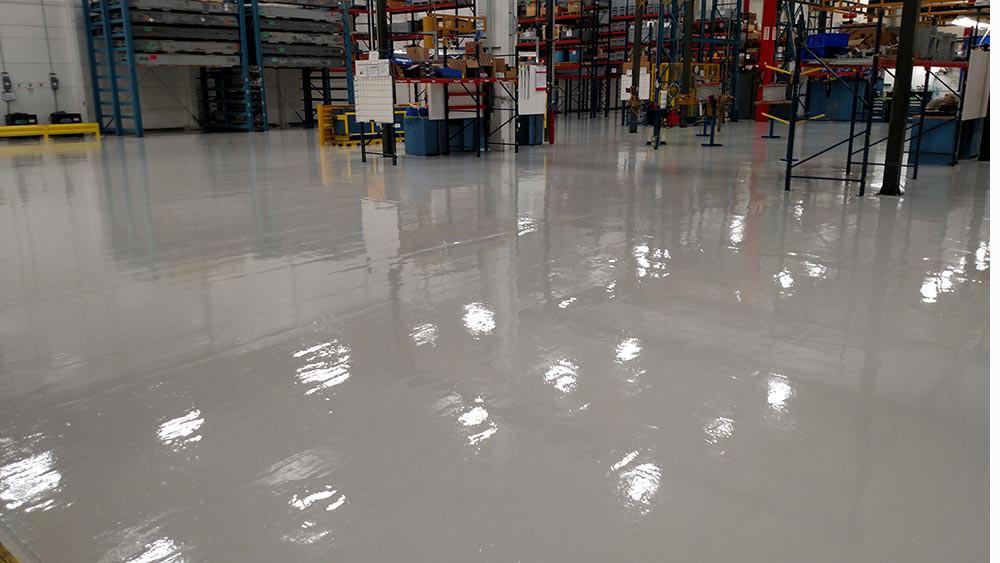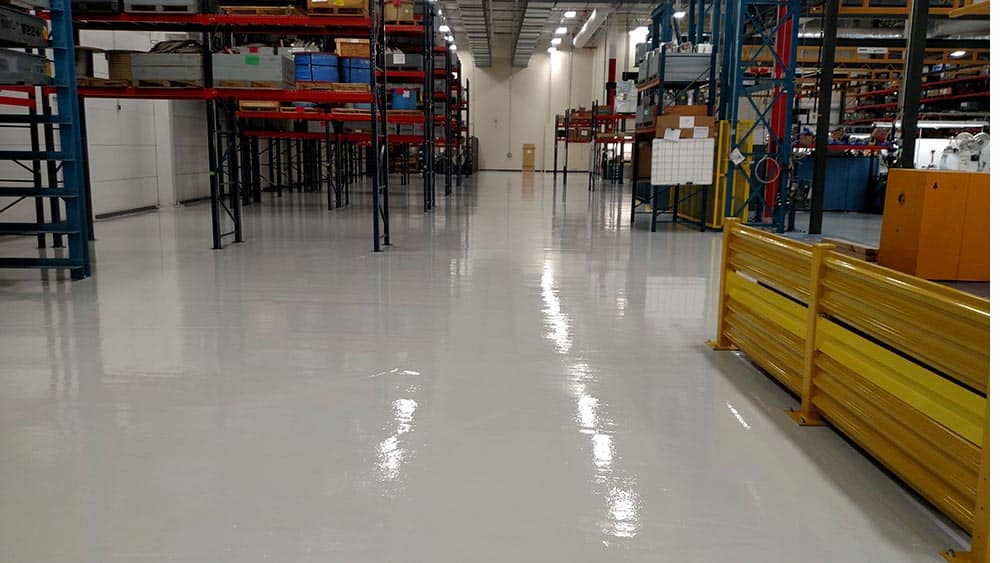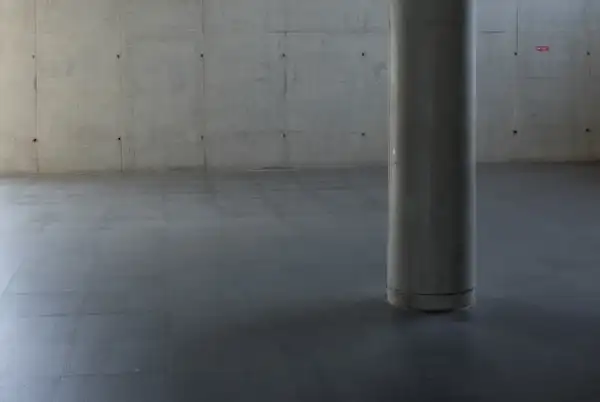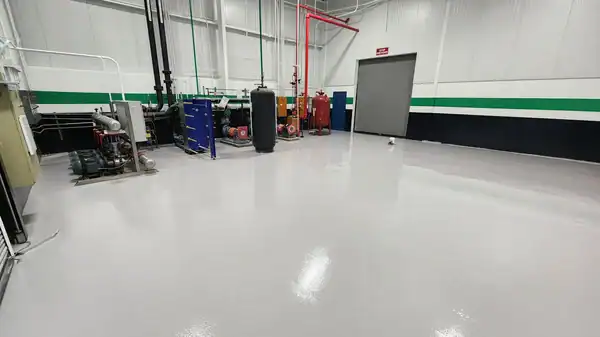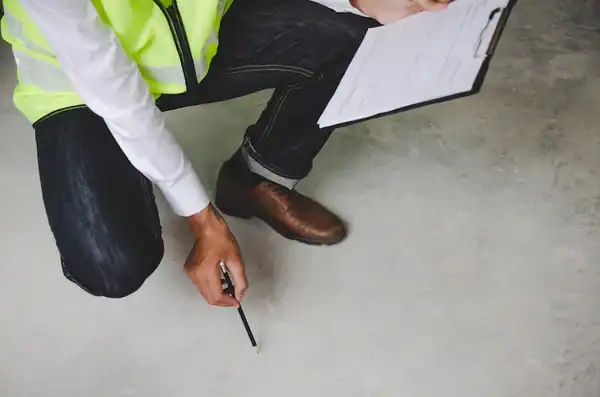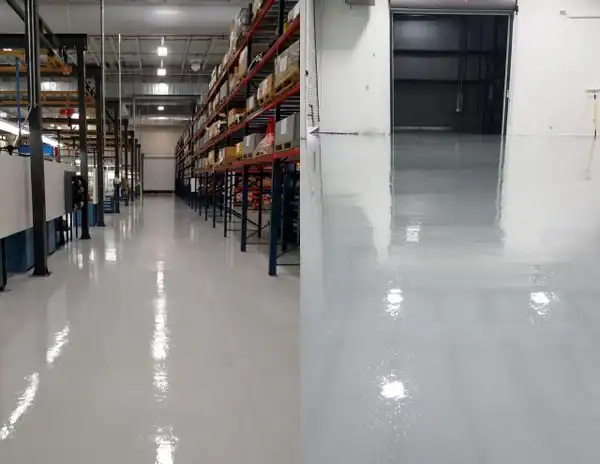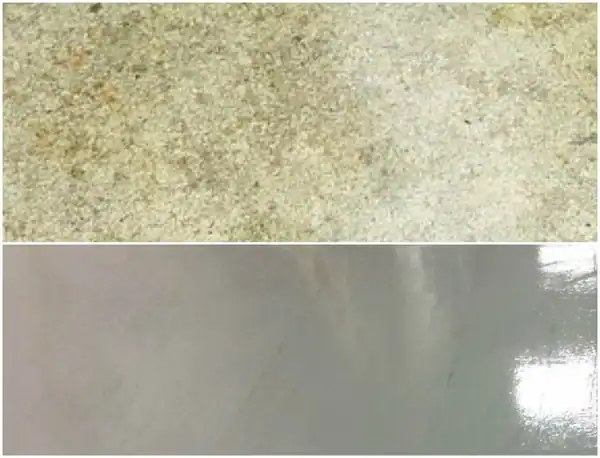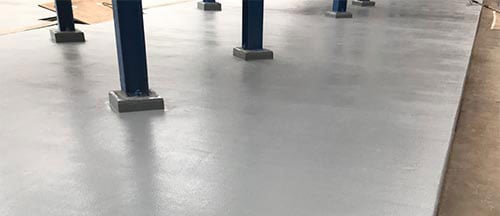Urethane Floor Coating
Durable Industrial Flooring Protection with a Glossy Shine
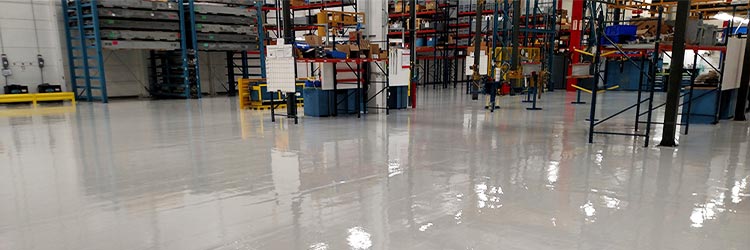
If you’re looking for a way to preserve the beauty of your facility’s existing floor while giving it superior protection, a urethane coating may be just what you need. Partnering with an experienced floor coating contractor and a proven urethane coating manufacturer ensures the job is done right, delivering durability, longevity, and a professional finish.
Considering installing urethane flooring in your facility? Start with this guide:

What Is Urethane Coating?
Urethane coating, also known as polyurethane coating, is a protective floor finish made from synthetic resin of polymer units linked together by urethane groups.
Polyurethane exists as a liquid resin, but once applied and cured, it forms an extremely tough and protective surface.
In addition to its strength, urethane coating is also highly versatile. In terms of flooring compatibility, urethane can be applied over a new concrete floor coating system or even existing floor coatings. In terms of appearance choices, urethane can be applied as a clear coating to preserve the floor’s natural look or as a pigmented coating to cover up a damaged floor.
Its unique combination of toughness and versatility makes urethane an ideal flooring solution for high-traffic or industrial environments.

The Benefits of Urethane Floor Coating for Industrial Environments
The secret to “epoxy” floors is not always the epoxy. Most times it is urethane or the urethane top-coat.
Durability
Urethane flooring stands up well under foot traffic and wheeled loads. It also offers excellent abrasion resistance and can withstand exposure to many chemicals without corroding, making it well-suited for manufacturing and processing environments. If your facility handles especially corrosive chemicals, you will want to consider extreme chemical-resistant flooring.
Longevity
The lifespan of a urethane floor coating depends on various environmental factors, but overall, urethane tends to be one of the longest-lasting floor coatings on the market. You can safely expect it to endure for years before you need to start thinking about applying another coat.
Aesthetics
Urethane coating provides a glossy or satin shine and is often used as a clear topcoat to protect existing colors or patterns on a floor. If your goal is to refresh the look of a worn or damaged floor, pigmented urethane coating offers an effective way to conceal imperfections.
Also, thanks to its durability, urethane resists chips and scratches, maintaining its visual appeal for years.
Multi-Surface Compatibility
Urethane coatings can be applied to various surfaces, including concrete and even previously coated floors, making them suitable for many facility types. Another trait that makes urethane coatings versatile is that they can be applied in combination with an epoxy coating to capitalize on the unique benefits of both floor coatings.

How Does Urethane Coating Differ from Other Floor Coatings?
Urethane vs. Epoxy
Between urethane and epoxy, each floor coating has its own pros and cons. One of the main differences between urethane and epoxy coatings is that urethane has more elasticity than epoxy. This attribute makes urethane ideal for colder environments and more resistant to scratching.
Concrete Sealer vs. Urethane
If you want to seal a concrete floor, you have at least two options: a concrete sealer or a urethane coating. Urethane coatings are significantly stronger and longer-lasting than basic concrete sealers. If you expect your floor to experience a lot of foot traffic, or you just don’t want to re-seal it every few years, a urethane floor coating is a better choice.

Possible Applications for Urethane Floor Coatings
Urethane has the kind of durability that will perform well in the toughest environments. Therefore, the question is not so much “Can I use a urethane coating?” but rather “Is a urethane coating necessary?”
In some cases, a urethane coating might be more than you require, while other environments may demand the durability and longevity that urethane offers. Here are some locations where a urethane floor coating is ideal:
- Manufacturing facilities with heavy traffic
- Parking garages
- Walk-in freezers and refrigerators
- Dairy farms

What Other Considerations Should You Have Before Installing Urethane?
How do I maintain a urethane floor?
Do…
- Make sure a newly coated floor is properly cured before putting equipment on it or putting it into service.
- Mop regularly.
- Use an “auto-scrubber” with medium bristle brushes.
- If possible, add protective mats to the bottom of shelving or other large items to protect the floor from scratches.
Do not…
- Use abrasive materials (such as a sander) to scrub or scrape your floors.
- Drag equipment across your floor. Instead, pick it up and place it where you want it.
- Clean with products that leave a residue behind.
Talk to us about new coating technology for applying coatings on damp concrete surfaces or places of high Moisture Vapor Transmission in the concrete slab.
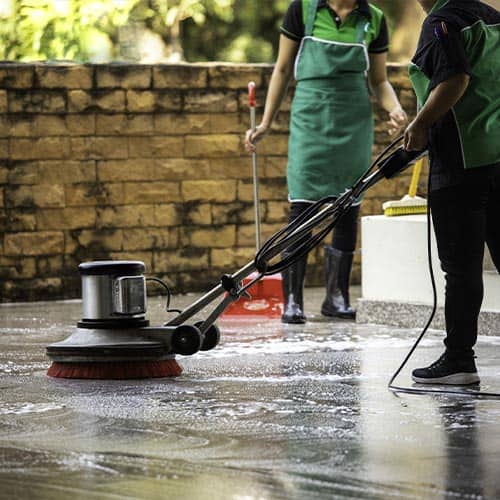
Contact CPC about urethane floor coatings
Choosing the right floor coating can feel overwhelming, but you don’t have to figure it out alone. CPC Floor Coatings has been coating floors across the Southeast for 40+ years. Our team is here to listen, understand your unique needs, and help you find the best solution for your space. We never try to sell our customers on a flooring type that’s not perfect for their needs. If urethane isn’t right for you, we’ll recommend a floor coating that is.
Quality is the cornerstone of our process, starting with the initial phone call until the project is complete. We thrive on repeat business, so our goal is to ensure that every experience you have with us is a good one. If you are unhappy, let us know so we can work to make it right.
Give us a call at (864) 855-0600 or fill out the form at the top of this page for a free consultation.

